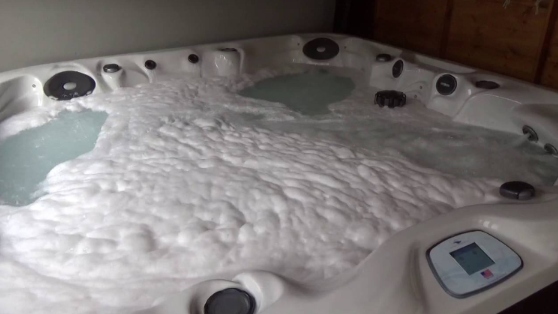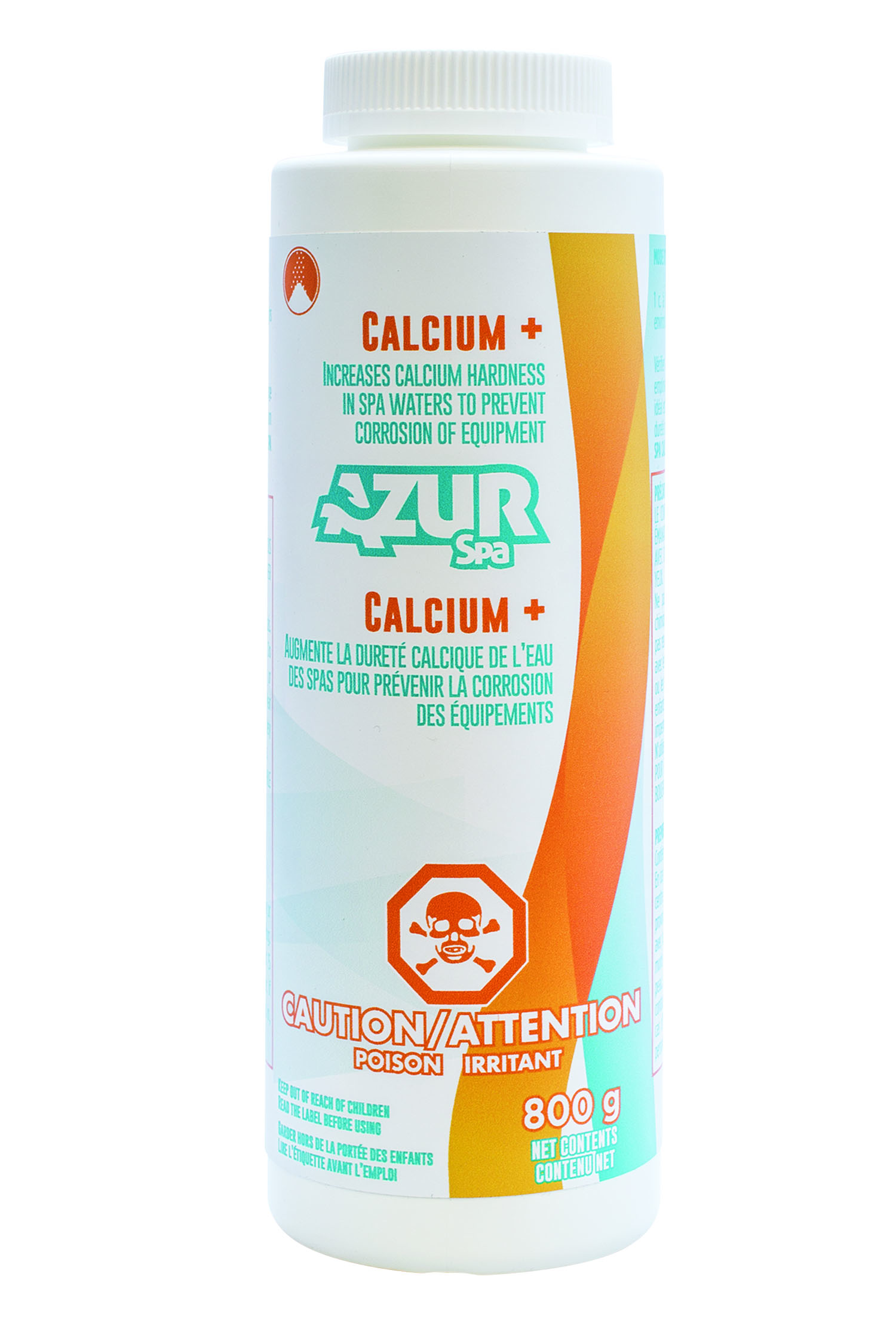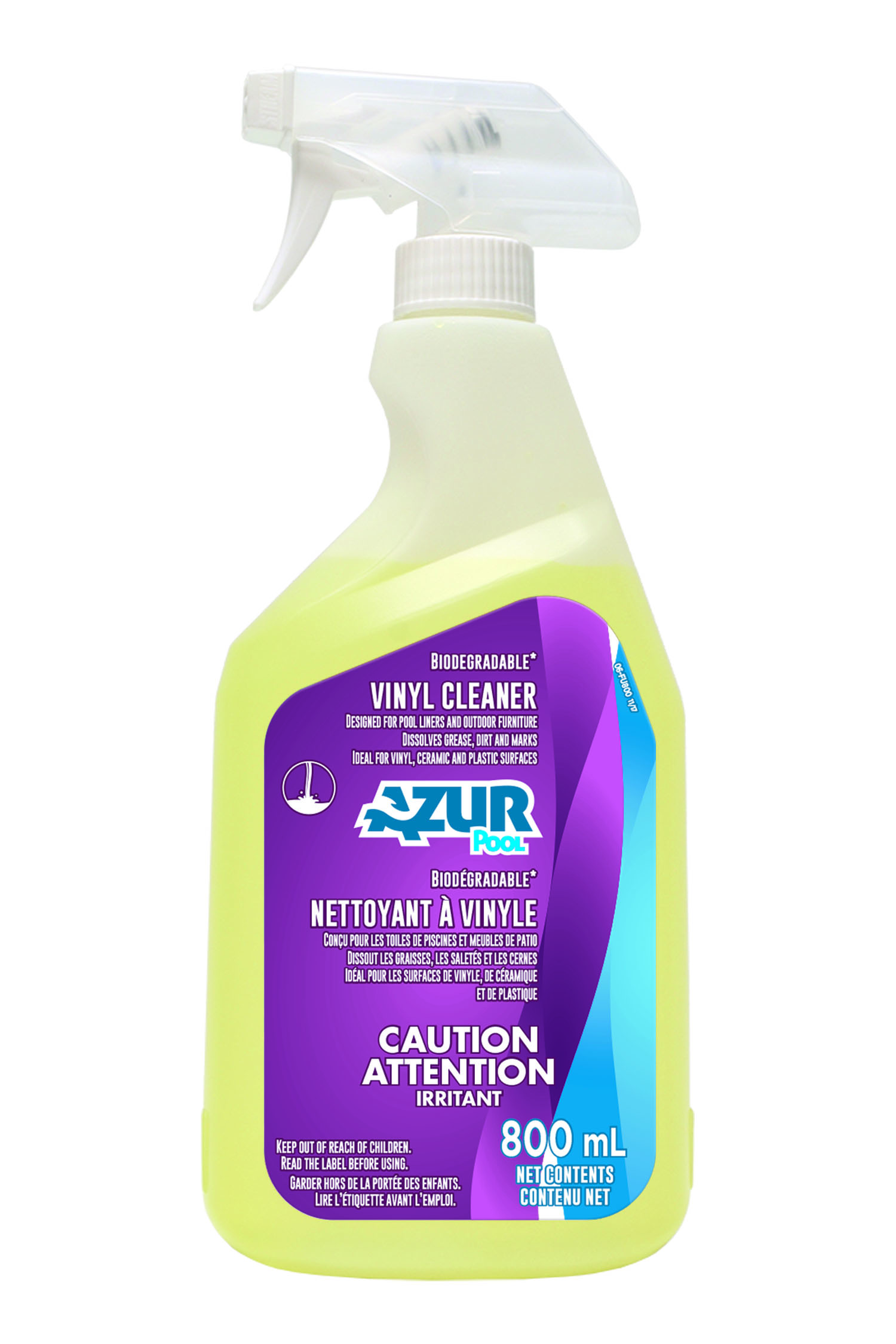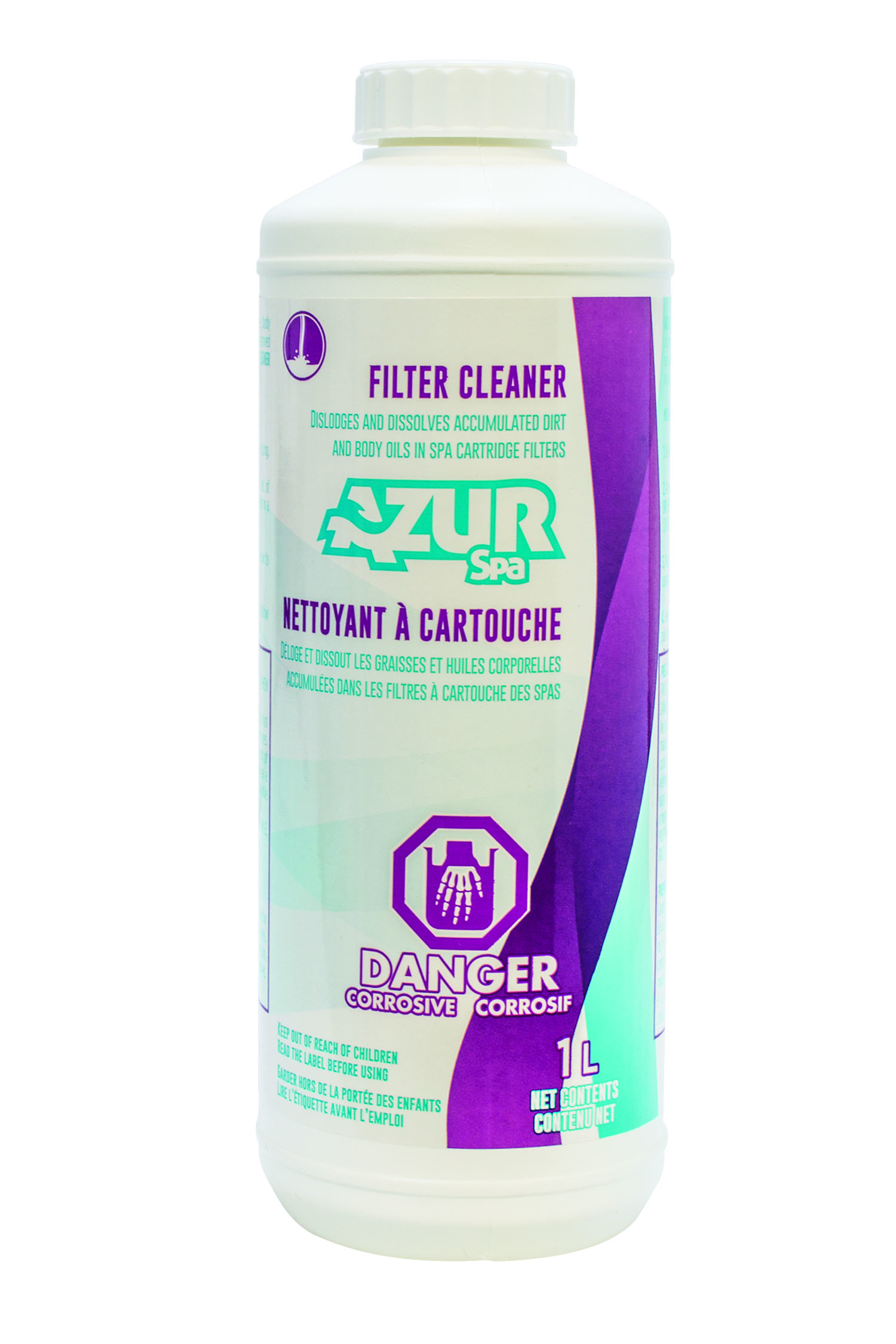
Unlike a swimming pool, foam is a real problem in a spa. Foam can occur for a variety of reasons, which will be discussed in more detail in the following.
Here are the 6 reasons that can explain the presence of foam in a spa:
- Lack of chlorine;
- Calcium hardness level is too low;
- Spa washed with a soapy product;
- Preventive algicide addition;
- Contaminated cartridge filter;
- Improperly rinsed cartridge filter.
1 – Foam Caused by a Lack of Chlorine
In a spa, the lack of chlorine leads to an increase in bacteria in the water. Most of the time, these bacteria come in the form of yellow or brown foam. A chlorine test can tell you the level of bacteria present in the water. Keep in mind that in a spa, the level to be respected is between 3 and 5 ppm of chlorine.
The solution is simple: just add chlorine to obtain the desired level. The foam should then dissipate.
2 – Foam Caused by Low Levels of Calcium Hardness
The calcium hardness in a spa should be between 150 and 200 ppm. In 90% of municipalities, the calcium hardness of tap water is around 40-50 ppm. If you do not adjust the hardness upward, you will notice a fine white foam on the surface of the spa water. Use then CALCIUM+ to increase the calcium hardness.
3 – Foam Caused by Washing the Spa with a Soapy Product
When you decide to empty the spa for washing, it is important to use a product specially designed for this purpose. Most spas are made of acrylic material, so it is necessary to use a product specifically designed to clean this type of surface. Do not use a household product that tends to foam on contact with water. Residues of this cleaner remaining on the surface after cleaning will create a very large amount of foam when filling the spa.
It is strongly suggested that you use VINYL CLEANER.
4 – Foam Related to the Addition of a Preventive Algicide
First of all, there is no reason to add algicide to a hot tub, either for the prevention or destruction of algae. It is virtually impossible to get algae in a residential spa since it is covered 95% of the time.
Algae proliferate due to photosynthesis. Photosynthesis is the bioenergetic process that allows organisms (such as algae) to synthesize organic matter using light energy. In other words, if there is no light, there will be no algae.
Thus, never put an algaecide in a spa, as it is an unnecessary prevention. Knowing that a preventive algaecide generates foam in a swimming pool, imagine the result in a spa!
5 – Foam Caused by a Contaminated Spa Cartridge Filter
We suggest cleaning the spa cartridge filter once a month with FILTER CLEANER to prevent contamination of the cartridge filter which can lead to foaming.
Originally, the filter membrane of a cartridge is completely white. With a contaminated cartridge, this membrane will turn from yellow to brown depending on the degree of contamination. It is therefore important to rinse the cartridge filter well every week with the garden hose and to clean it with the appropriate product every month.
6 – Foam Caused by an Improperly Rinsed Cartridge Filter
After washing your cartridge filter with FILTER CLEANER, it is important to rinse it thoroughly under running water to remove any remaining traces of the cleaning product. Skipping the rinse step may very well create foam in the spa.
This product is excellent for cleaning cartridges, but it should not come into contact with clean spa water as it is highly foaming.



